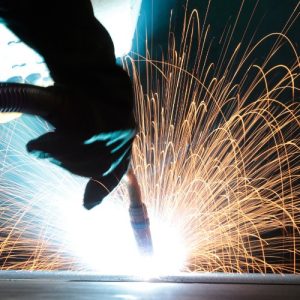 Welding is a fabrication process where two or more parts are fused together by the use of heat, pressure, or both, forming a join as the parts cool. Welding is usually used on metals and thermoplastics but can also be used on wood.
Welding is a fabrication process where two or more parts are fused together by the use of heat, pressure, or both, forming a join as the parts cool. Welding is usually used on metals and thermoplastics but can also be used on wood.
Here we will discuss some of the most common welding techniques used in the industry and where they are used. Note that the types of welding mentioned here apply only to metals. The following are the most common metalworking weld methods in use today.
Arc Welding
arc welding uses an electric arc to melt materials before joining them together. A power supply is used to create an electric arc between an electrode (which can be either consumable or non-consumable) and the base metal to melt the metals at the point of contact. The welding area is usually protected by some type of shielding gas, vapor, or slag. This is because the atmospheric air can interact with the weld pool and cause oxidation. This electric arc can create temperatures upwards of 6300°F (3500°C), which is high enough to melt metals like carbon steel.
Applications of arc welding:
• Shipbuilding
• Automotive industries
• Construction industries
• Mechanical industries
MIG (Metal Inert Gas) Welding
MIG or metal inert gas welding is another welding method that uses an electric arc to create welds. However, MIG uses a continuous solid wire electrode, which is heated and fed into the weld pool from a welding gun. The two base materials are melted together, forming a join. In MIG welding, the melted electrode facilitates the joining of the two metals. Hence, MIG is ideal for joining dissimilar metals. Shielding gas is also supplied through the weld gun to ensure that the weld pool does not interact with the air, oxidizing the weld area.
Some of the popular applications of MIG welding:
• Used for most types of sheet metal welding
• Fabrication of pressure vessels and steel structures
• Automotive industry and home improvement industry
TIG (Tungsten Inert Gas) Welding
Tungsten inert gas welding (TIG) uses a non-consumable tungsten electrode to create an arc between the metals. The weld area and electrode are protected from oxidation or other atmospheric contamination by an inert shielding gas, such as argon or helium. Filler metal is also sometimes used. TIG welding can work on both AC and DC power sources. One of the greatest strengths of TIG welding is that it can be used for welding non-ferrous metals like aluminum, copper, magnesium, copper, nickel, titanium, etc.
Some of the popular applications of TIG welding include:
• Aerospace and aircraft construction
• Automotive industry
• Auto body repairs
Flux-Cored Arc Welding (FCAW)
Flux-cored arc welding (FCAW) uses a continuous wire-fed electrode, a constant-voltage welding power supply, and similar equipment to MAG welding. There are two types of flux cored arc welding — Self-Shielded and Gas-Shielded Flux-Cored welding. The FCAW process can be divided into two types depending on the shielding method; one that uses an external shielding gas and one that solely relies on the flux core itself for protecting the weld area. The shielding gas, where used, protects the weld pool from oxidation and is usually provided externally from a high-pressure gas cylinder. Weld metal is also shielded by the slag formation from flux melting. Where an external shielding gas is not used, the process relies instead on the protection offered by the flux-cored electrode itself. This electrode provides gaseous protection and also forms a slag that covers and protects the molten metal in the weld.
Some of the popular applications of flux cored arc welding are:
• Manufacturing plants
• Shipbuilding
• Industrial piping
• Railroads
• Maintenance and repair